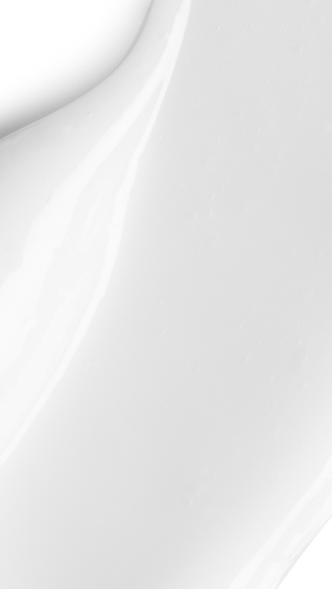
What is Wet Dandruff and How Can I Get Rid of It?
Dandruff can be hugely frustrating. Not only can it make us feel self-conscious, but it can also cause problems with itching and irritation. When you see flakes in your hair, you’ll probably instantly think of dandruff – but did you know, there are different types of dandruff?
Most people will be familiar with dry dandruff, but people can also suffer with wet dandruff, which will need to be treated slightly differently. Below we look at the difference between wet and dry dandruff, and how you can get rid of wet dandruff.
What’s the Difference Between Wet Dandruff and Dry Dandruff?
As the name suggests, dry dandruff will consist of dry flakes. They’ll be white or light-colored and the flakes will easily fall out of your hair. Dry dandruff is usually a mild condition that can be easily treated with the right type of anti-dandruff shampoo.
Wet dandruff will consist of heavy, oily flakes, usually yellow in color. These flakes can become sticky and clump together in your hair and on your scalp. This can be a more severe condition, causing a more tender and inflamed scalp. Wet dandruff is a common symptom of seborrheic dermatitis, but it can also be associated with other skin conditions like psoriasis and atopic dermatitis.
What Causes Wet Dandruff?
Wet dandruff is caused when the sebaceous glands underneath your scalp produce too much sebum. Usually, a small amount of natural oil is needed to keep your hair and scalp moisturized, which also acts to reduce frizz and keep your hair looking sleek and shiny.
However, when too much natural oil is produced, it will begin to build up on your scalp. This in turn will attract dirt and dead skin cells, which is what causes the clumps to form.
But why would sebaceous glands produce excess amounts of sebum? There are a few different reasons why your scalp might produce too much oil. It could be related to hormone changes that can come with puberty or stress. It could also be because you need to adjust your hair washing routine to increase how much you shampoo it. If you aren’t shampooing your scalp enough, dirt and oils will build up, leading to wet dandruff.
How to Treat Wet Dandruff
Shampooing
If you find that you have a particularly oily scalp, you may need to wash your hair more often. This can eliminate the build-up of oil and dirt that causes wet dandruff.
It’s important to use the right type of shampoo for your hair type. There are some anti-dandruff shampoos and shampoos specifically formulated for greasy hair that can help to reduce wet dandruff.
Some people might be wary about washing their hair more often as this can cause the hair to dry out – the last thing you want is to get rid of wet dandruff and then have to deal with dry, frizzy hair! So, you should include a deep conditioning treatment in your haircare routine. Super Gloss from Glaze not only deeply conditions and nourishes your hair but it can also increase the vibrancy of your color, without any ammonia-fueled dyes.
If your wet dandruff is caused by under-washing, increase the number of shampoos to eliminate excess oils and follow up with Glaze Super Gloss to leave your hair with a mirror shine and extraordinary softness.
Diet
There has been some research to show that diet can help those that have some skin conditions. If your wet dandruff is caused by a condition like psoriasis, eating healthy foods can help to reduce the build-up of flakes. You could try eating more whole grains, fruits, and vegetables, and you should reduce the amount of processed food you have in your diet.
Aloe Vera
Aloe Vera gel is a popular home remedy for getting rid of wet dandruff. Aloe very contains cleansing enzymes as well as vitamins and glycoproteins that all work to soothe the scalp. It will remove the build-up of skin cells, oil and dirt that forms wet dandruff clumps, de-clogging your hair follicles. Those that use aloe very gel to treat their wet dandruff will usually find that the inflammation and itchiness are both reduced.
To use aloe vera gel to treat wet dandruff, simply apply the gel all over your scalp. Then soak a towel in hot water, wring out the excess and wrap it around your head. Leave it for 30 minutes before you wash out the gel. Doing this two or three times a week will help to reduce any wet dandruff build-up.
Fenugreek Seeds
Research has shown that Fenugreek seeds, with their antibacterial and antifungal properties, can also help to alleviate wet dandruff. Fenugreek seeds come from a Mediterranean herb and need to be soaked in water overnight to create a paste. This paste can then be applied to your scalp and left to sit and work its magic for 30 minutes before being washed out with a mild shampoo. You can use this method to treat wet dandruff up to two times per week.
Prescription Medication
If your wet dandruff is caused by a skin condition, you should speak with a doctor about the best treatment. They might be able to prescribe an anti-fungal shampoo or medicated lotions and shampoos specific for the condition that is causing wet dandruff.
Need more help?
Still have a question? We’re here to help you. If you have any concerns you’d like to discuss, please get in touch…
Contact Us







